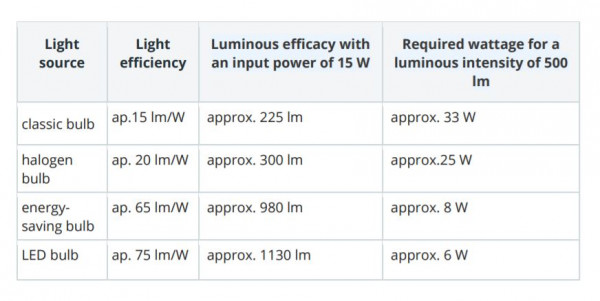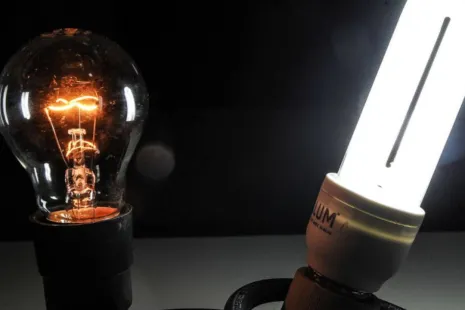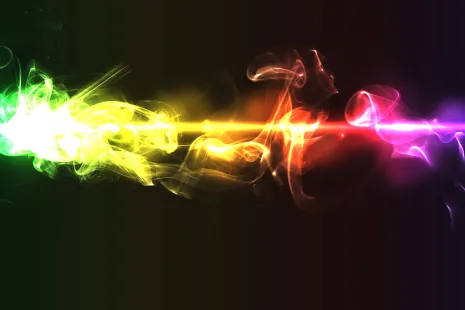Differences in luminous intensity of bulbs
Added 8.2.2022 14:37.02
Fiat lux! No, we haven't changed our line of business and moved into automotive. The phrase means "let there be light" in Latin. It's a quote from the Book of Genesis, which describes the creation of the world, which begins with light. We may be mere mortals, but with every flick of a switch we can play a little bit of supreme. And we can even choose how intense that light is. In today's article, we'll look at the differences in light bulb intensity.
Bulb wattage no longer matters
Not so long ago, we used to choose light bulbs based on wattage, taking into account mainly the stated wattage. All tungsten bulbs had virtually the same luminous efficiency (about 15 lm/W), and the more watts, the more light.
But of course this is no longer the case.
Today, incandescent bulbs - and this is especially true for LED bulbs - have a diametrically different luminous efficacy (typically on a scale of 70 to 160 lm/W), so that the wattage no longer tells you how much light energy a given luminaire emits.
This is why we are nowadays guided by luminous flux when choosing bulbs.
But first a little theory and explanation, so that the subsequent presentation of the differences in luminous intensity of different types of bulbs does not confuse you.
Luminous flux vs. luminous intensity
The most important criterion when choosing a light is its luminous flux. This indicates the total amount of light energy emitted by the light source. In layman's terms: it expresses how bright a given light will be. Its value is given in lumens. And the simple equation applies - the higher the luminous flux, the more intense the illumination.
In fact, attentive readers of our blog know from an earlier article that there is also a luminance parameter. It shows the distribution of luminous flux from one light source in different directions. It therefore indicates the amount of light emitted at a certain angle. Its unit is the candela (cd). And why this name? The reason is simple: 1 cd is the luminous intensity of a conventional candle.
A lamp with a luminous intensity of 200 cd will therefore shine in the same way as 200 candles in one direction.
The difference between luminous intensity (cd) and luminous flux (lm) is beautifully illustrated in this picture.

That's why we prefer to set the record straight in advance, lest some photometry fan accuse us of inaccuracy.
We realise that this is not quite correct in theory, but in practice, luminosity is not expressed in terms of candelas, but in terms of lumens - and therefore luminous flux.
We could be precise, but usually the number of candelas is not indicated on the packaging or in the product description, only the lumens.
So what about compromising and calling this parameter "luminous intensity"?
Differences in "luminous intensity" of bulbs
Let's show this with an illustrative table. But the values given are only indicative and serve as a simple illustration of the different efficiencies of different types of bulbs.

The table clearly shows that energy saving and LED bulbs are much more luminous than tungsten and halogen bulbs. They also have very low consumption. Therefore, modern bulbs even with a minimum wattage in terms of luminous intensity fully replace conventional ones with a multiply higher wattage.
We are here for you
Need advice? Contact us. We will be happy to help you. And together we will tune your home to the tones that suit you best.








































